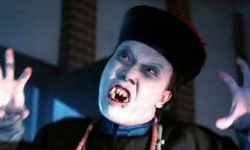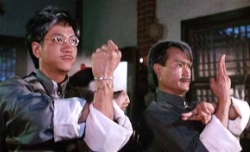 When Peter Stanfield publishes a book, it’s a cult cinephile’s cause for celebration. Having examined pop 1950 cinema and pulp fiction in past titles, also for Rutgers University Press, the UK film professor cranes his neck at Hoodlum Movies: Seriality and the Outlaw Biker Film Cycle, 1966-1972. Like so many other types of teenpics in which the likes of Roger Corman and Samuel Z. Arkoff specialized, the biker movie was short-lived and derided by critics; as Stanfield notes, “Repetitious, poorly made, and morally putrescent” was the name of the press’ repeated game. Only a few dozen were made, and fewer are remembered today, but he ticks through them snobbery-free, as if each one were an important piece of a time-capsule whole — and they are (which is rarely to be confused with “good”). Excepting a couple of instances of repetition (like the parentage of Nancy Sinatra, Peter Fonda, et al.), Stanfield revs up another winner. Outside of the woefully out-of-print Big Book of Biker Movies, this is the best work on the subgenre yet.
When Peter Stanfield publishes a book, it’s a cult cinephile’s cause for celebration. Having examined pop 1950 cinema and pulp fiction in past titles, also for Rutgers University Press, the UK film professor cranes his neck at Hoodlum Movies: Seriality and the Outlaw Biker Film Cycle, 1966-1972. Like so many other types of teenpics in which the likes of Roger Corman and Samuel Z. Arkoff specialized, the biker movie was short-lived and derided by critics; as Stanfield notes, “Repetitious, poorly made, and morally putrescent” was the name of the press’ repeated game. Only a few dozen were made, and fewer are remembered today, but he ticks through them snobbery-free, as if each one were an important piece of a time-capsule whole — and they are (which is rarely to be confused with “good”). Excepting a couple of instances of repetition (like the parentage of Nancy Sinatra, Peter Fonda, et al.), Stanfield revs up another winner. Outside of the woefully out-of-print Big Book of Biker Movies, this is the best work on the subgenre yet.
 Die Hard. Predator. The Hunt for Red October. Federal prison. Okay, so you can’t win ’em all. But in the late 1980s, the gifted director John McTiernan was poised to become a Hollywood all-timer by knocking out three well-received smash hits in a row. Then Last Action Hero happened, and no amount of Die Hard sequels could save the rather precipitous slip of legal misfortune that followed. Arkansas-based freelancer Larry Taylor recounts every step in John McTiernan: The Rise and Fall of an Action Movie Icon, and while the McTiernan saga is interesting, Taylor’s book is a missed opportunity. Disappointingly, yet not surprisingly, Taylor was unable to interview McTiernan for the McFarland & Company release, so he relies on others’ previously published articles to build the narrative, sometimes straining for drama when the beats simply are not there. It reads like an extended press-kit bio with the occasional “huh, didn’t know that” kernel of info.
Die Hard. Predator. The Hunt for Red October. Federal prison. Okay, so you can’t win ’em all. But in the late 1980s, the gifted director John McTiernan was poised to become a Hollywood all-timer by knocking out three well-received smash hits in a row. Then Last Action Hero happened, and no amount of Die Hard sequels could save the rather precipitous slip of legal misfortune that followed. Arkansas-based freelancer Larry Taylor recounts every step in John McTiernan: The Rise and Fall of an Action Movie Icon, and while the McTiernan saga is interesting, Taylor’s book is a missed opportunity. Disappointingly, yet not surprisingly, Taylor was unable to interview McTiernan for the McFarland & Company release, so he relies on others’ previously published articles to build the narrative, sometimes straining for drama when the beats simply are not there. It reads like an extended press-kit bio with the occasional “huh, didn’t know that” kernel of info.
 Part of Edinburgh University Press’ ReFocus series of essay collections on film auteurs, ReFocus: The Films of William Castle provides a dozen essays on the man who wanted to “scare the pants off America,” but also wound up in monster kids’ collective hearts. Castle became the Alfred Hitchcock of the B movies, but the book does not ignore his early career anonymously toiling in noir and Western programmers. Of course, once editor Murray Leeder and company turn their critical eye to Castle’s gimmick era — one of such matinee classics as The Tingler, The House on Haunted Hill, 13 Ghosts, etc. — is when it hits peak interest, and the book argues his ballyhoo can still be felt today in upsold-theatrical formats like IMAX. Additional chapters explore Castle’s role “playing” himself, how he played with gender at a time when it was decidedly not in vogue, and the line that can be drawn directly from him to John Waters. Texts on Castle are far from dime-a-dozen, so fans who take the filmmaker seriously owe it to themselves to get this. —Rod Lott
Part of Edinburgh University Press’ ReFocus series of essay collections on film auteurs, ReFocus: The Films of William Castle provides a dozen essays on the man who wanted to “scare the pants off America,” but also wound up in monster kids’ collective hearts. Castle became the Alfred Hitchcock of the B movies, but the book does not ignore his early career anonymously toiling in noir and Western programmers. Of course, once editor Murray Leeder and company turn their critical eye to Castle’s gimmick era — one of such matinee classics as The Tingler, The House on Haunted Hill, 13 Ghosts, etc. — is when it hits peak interest, and the book argues his ballyhoo can still be felt today in upsold-theatrical formats like IMAX. Additional chapters explore Castle’s role “playing” himself, how he played with gender at a time when it was decidedly not in vogue, and the line that can be drawn directly from him to John Waters. Texts on Castle are far from dime-a-dozen, so fans who take the filmmaker seriously owe it to themselves to get this. —Rod Lott

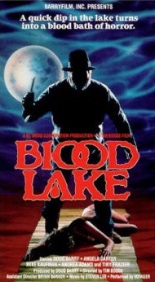
 By all accounts,
By all accounts, 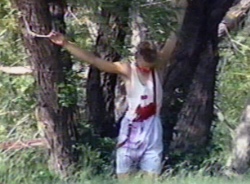

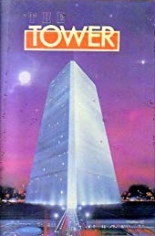
 Shot on video for Canadian television by the
Shot on video for Canadian television by the 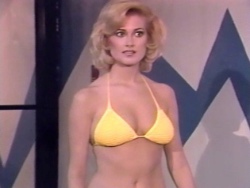

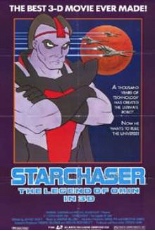
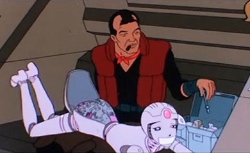

 Kung fu and horror movies go together amazingly well. From the Shaw Brothers/Hammer Films coproduction
Kung fu and horror movies go together amazingly well. From the Shaw Brothers/Hammer Films coproduction 